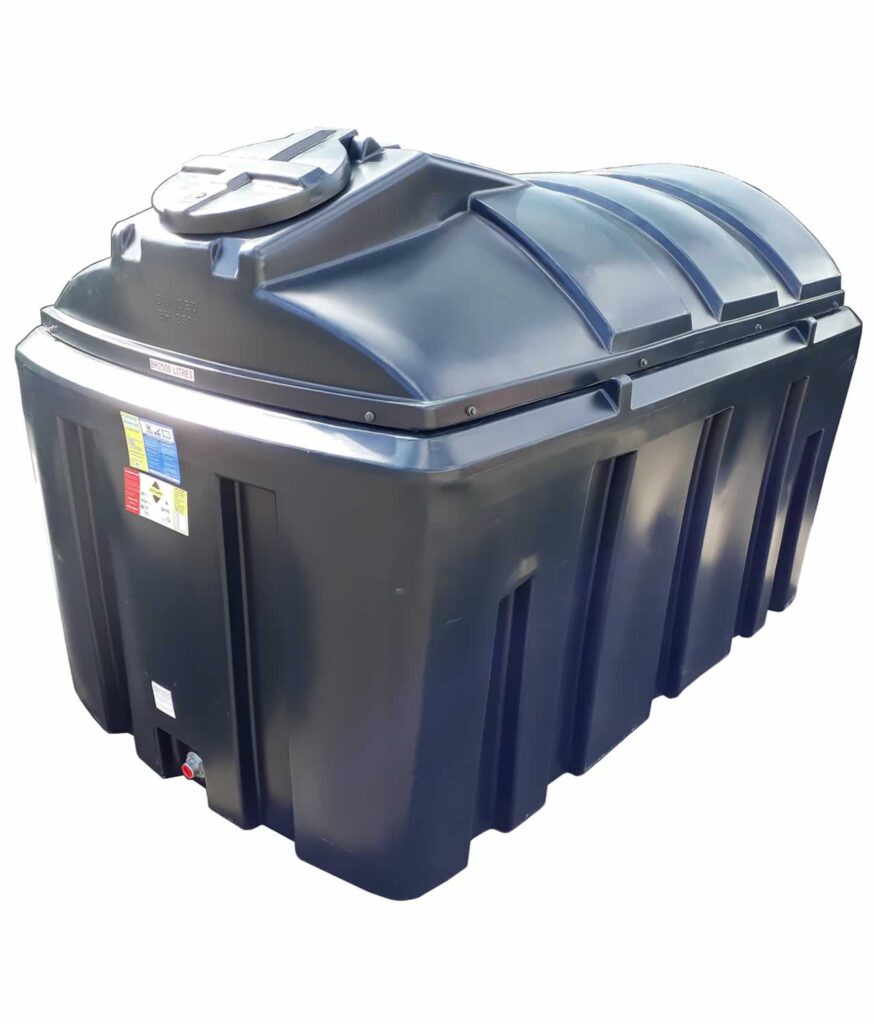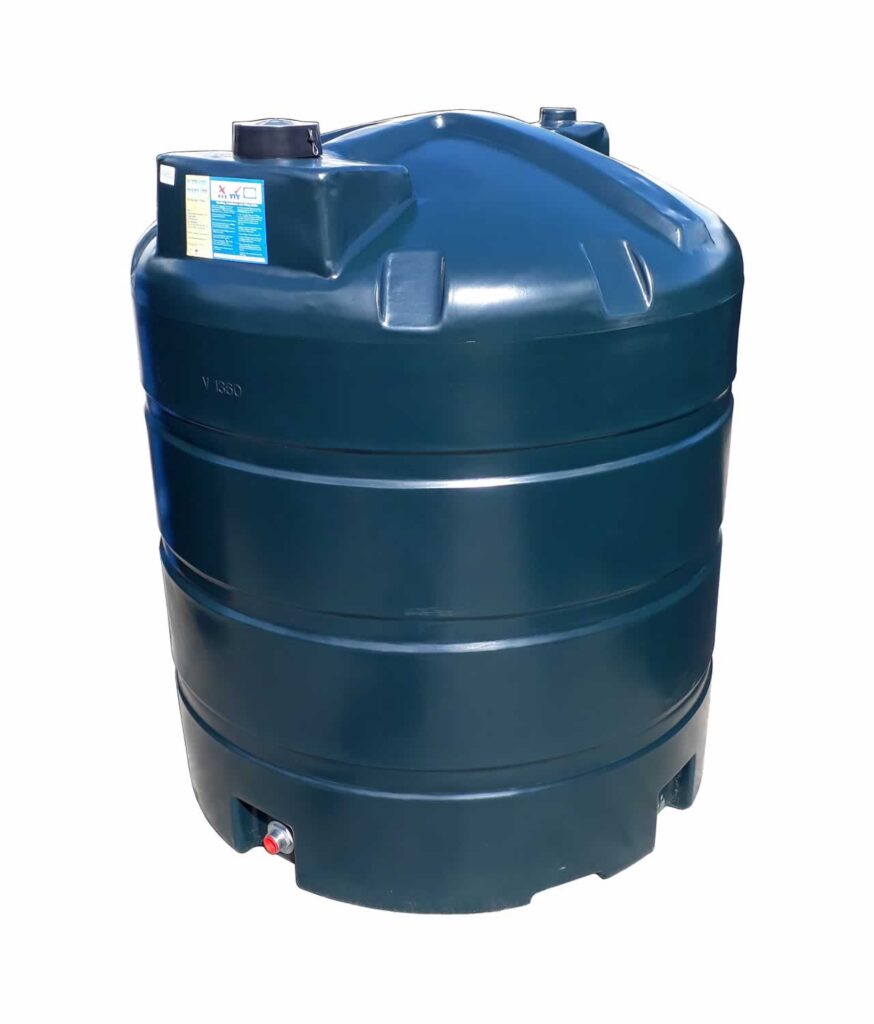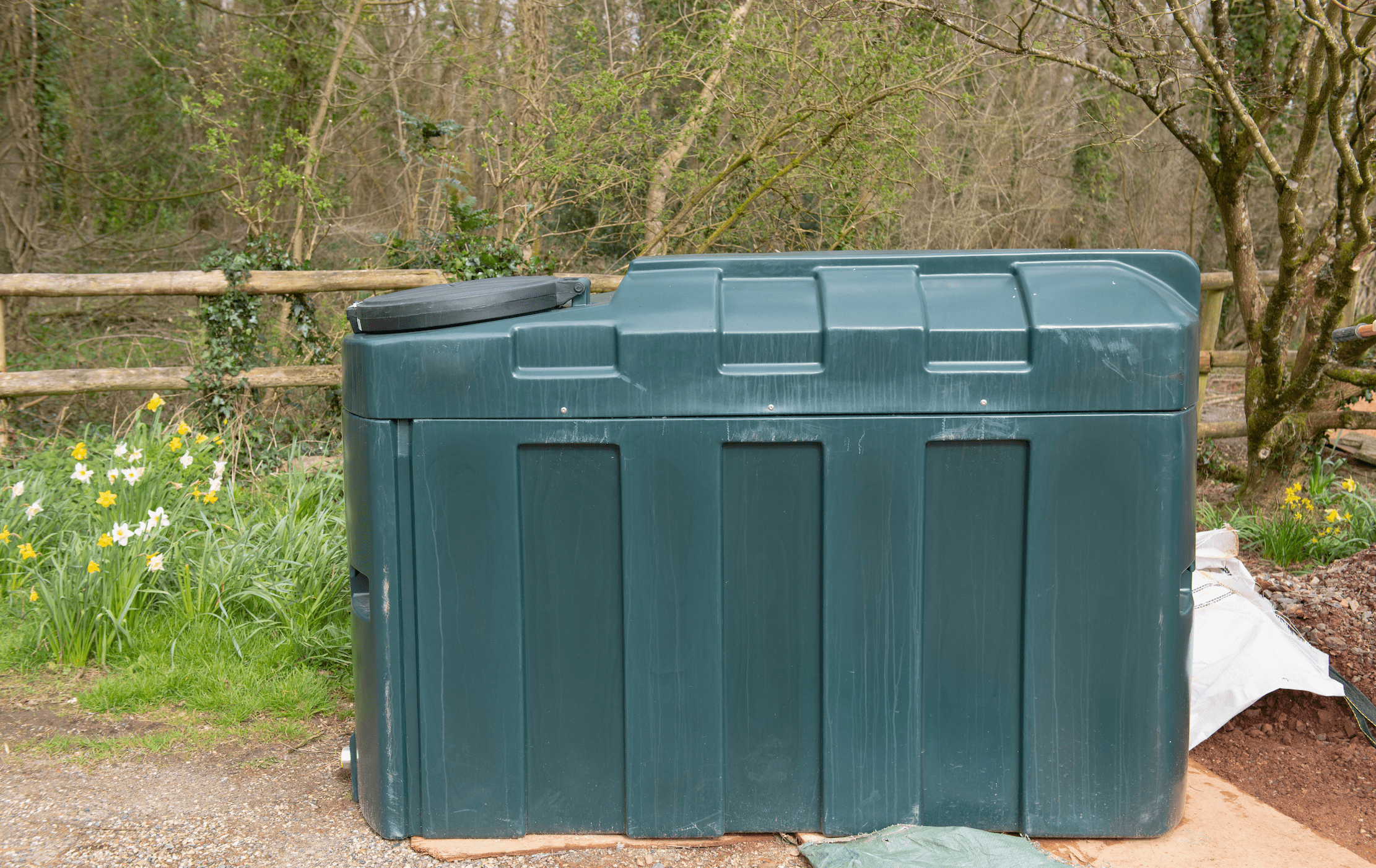When it comes to storing oil, choosing the right type of oil tank is important for safety, cost-effectiveness, and durability for the specific purpose. There are various oil tank types to suit different oil storage requirements, so it can be quite confusing to determine which type of oil tank to choose from.
This guide will identify the different oil tank types, highlighting the strengths and best uses for each option available. We’ll explore bunded, single skin, steel and plastic options by highlighting the features, advantages and best use cases. This guide will help you make an informed decision for both residential and commercial oil storage.
What is a bunded oil tank?
A bunded oil tank is a vessel containing two tanks. The outer tank forms a protective layer to prevent spills and leaks. The actual oil is stored in the inner tank. There is a small space between the two layers, known as the ‘bund’. This area will store any leaks and spills.
Due to the double layer, this oil tank type brings several advantages. It adds environmental protection, allows you to avoid hidden clean-up costs, and potentially helps lower insurance premiums. Sometimes, where you need a high oil storage capacity, it might also be a law requirement.

In some parts of the UK, including Wales, all oil tanks over 200 litres need to be bunded with a 110% capacity. Sometimes, it also depends on how close potable water sources are. It is worth double-checking your local regulations to ensure that you are compliant. In Wales, failure to comply results in a £5,000 fine, and you could face prosecution.
Our bunded oil tanks range from 650 litres to 2500 litres. On average, bunded oil tanks can last around 15 years, but that can be extended with regular maintenance and cleaning.
Shop now: 1,000 litre bunded heating oil tank from QuickTanks – £1,149.99 incl. VAT
What are the best uses for a bunded oil tank?
If environmental protection and fuel theft are top concerns, then a bunded storage vessel is the perfect type of oil tank for homes. As explained above, a bunded oil tank provides greater protection against spills and leaks due to the protective outer layer.
A bunded oil tank also makes it harder for thieves to take the oil because it is noisier and takes more time to reach the inner tank. This makes a bunded oil tank a better choice if it will be in a remote location. It’s also the oil tank type to go for if environmental regulations dictate a bunded tank. This oil tank type is often more expensive upfront, but could save money in the long run due to the potentially lower insurance and clean-up costs.
What is a single skin oil tank?
Unlike a bunded tank, a single skin oil tank has just one layer. This means there is no protective layer for leaks and spills. A bunded oil tank is most commonly used, but there are occasions when a single skin oil tank is the right type of oil tank for homes and industrial purposes.

Our single skin oil tanks range from 650 litres to 1360 litres. On average, single skin oil tanks can last around 15 years, but that can be extended with regular maintenance and cleaning.
What are the best uses for a single skin oil tank?
Single skin oil tanks provide a cost-effective oil storage solution where you need to store small amounts of oil in an environment that isn’t classed as sensitive. You will need to check your local guidelines to ensure you comply with the regulations when opting for this oil tank type.
Shop now: 1,000 litre single skin heating oil tank from QuickTanks
What are the advantages of a plastic oil tank?
Plastic oil tanks are perfect for those wanting an affordable yet durable storage option. One of the most common reasons people opt for this oil tank type is due to its impressive durability.
Our plastic oil tanks are made from UV-stabilised, corrosion-resistant polyethylene. Unlike steel tanks, this type of oil tank for homes and industrial purposes is not susceptible to rust and corrosion. Plastic oil tanks can also withstand harsh weather conditions whilst being less expensive than their steel counterparts.
The plastic oil tanks are lightweight, making them easy to transport and install. This is important for remote locations that are difficult for heavy machinery to reach.
On average, a well-maintained plastic oil storage tank can last 15 to 20 years. Tanks exposed to extreme weather or direct sunlight may degrade faster, but regular maintenance can extend the lifespan of your tank.
What are the best uses for a plastic oil tank?
This oil tank type is ideal for use in remote locations that are difficult to access with heavy machinery and is a cost-effective alternative to steel oil tanks. They will provide safe storage, especially if you opt for a bunded version.
What are the advantages of a steel oil tank?
Steel oil tanks are known for their robustness and longevity. If this type of oil tank is well looked after, its lifespan can reach up to 30 years. This depends on environmental conditions, which could make them prone to corrosion.
Steel oil tanks are typically more expensive upfront, but their durability can offset the initial cost. If you choose this type of oil tank for homes and industry purposes, it will need regular maintenance to prevent corrosion.
The toughness of steel oil tanks can deter thieves. Cutting through steel is much more difficult and noisy than trying to cut a plastic tank.
Shop now: 10,000 litre steel bunded diesel fuel tank from QuickTanks
What are the best uses for a steel oil tank?
It is worth opting for a steel oil tank if you place it in an exposed or high-risk area due to its natural deterrent to thieves. This type of oil tank is also worth considering if you want to save money in the long term, as it is more durable.
We have a large selection of different oil tank types to suit your needs, so shop our extensive collection today. If you need any advice on choosing the right oil tank for you, our friendly team is on hand and ready to help. Just get in touch.

